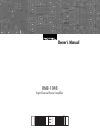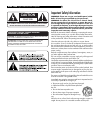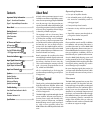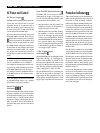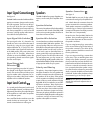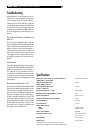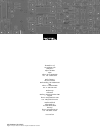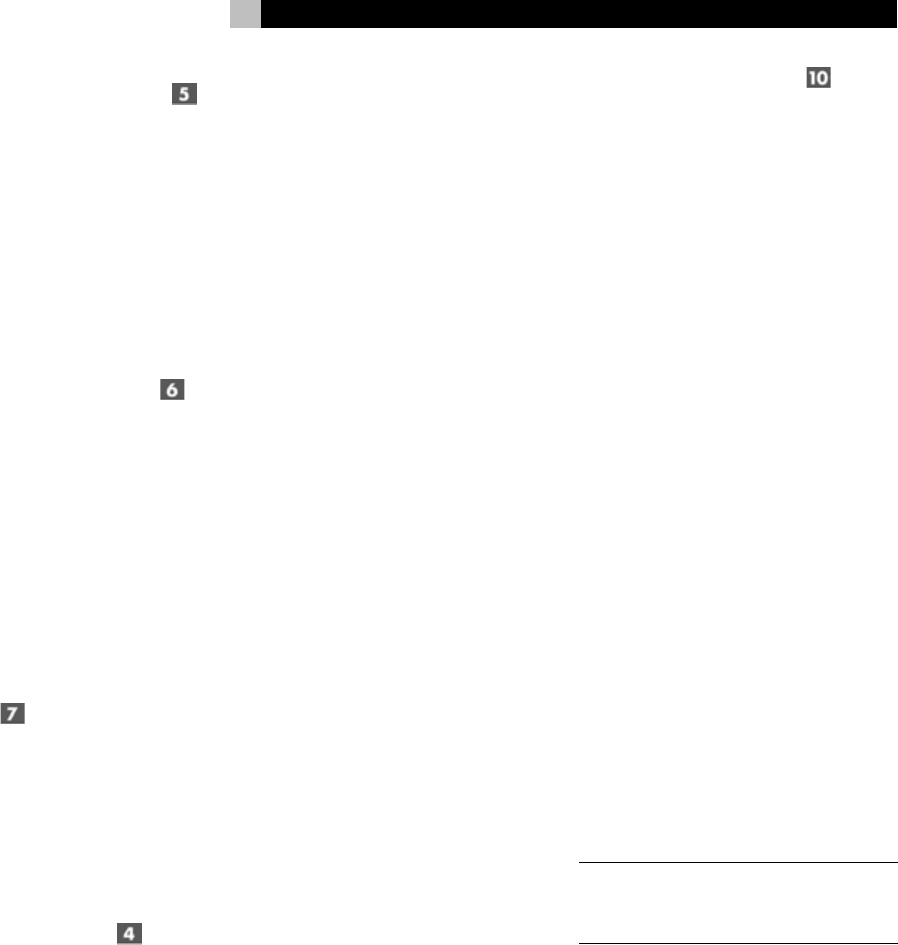
7
English
Input Signal Connections
See Figure 2
The RMB-1048 has standard unbalanced RCA-
type input connectors, the type used on nearly
all audio equipment. There are two RCA in-
puts for each of the four pair of amplifier
channels. These RCA inputs accept audio sig-
nals from preamplifiers or surround sound
processors. Use high quality audio intercon-
nect cables for best performance.
Input Signal Link Switches
The input signal to the “A” channels to be
passed on to one or more of the other sets of
channels by using the input signal LINK
switches. When the “B”, “C” and/or “D” chan-
nels have their Input Signal Link Switches set
to the LINK position, they receive the same
signal as the “A” channels. When these
switches are set to the STEREO position the
corresponding channel receive their signals
from the normal inputs.
Signal Output Link
Connectors
The input signal that goes to the “A” inputs is
also passed on the Signal Output Link con-
nectors. This can be used to provide an input
signal to another audio component. For ex-
ample, it can be used to “daisy-chain” another
amplifier to drive additional speakers.
Input Level Controls
Four controls on the front panel, one for each
pair of amplifier channels, provide input level
adjustments. These allow you to adjust the gain
of the amplifiers to match other components
in an elaborate system.
Use a small flat blade screwdriver to turn the
control clockwise to increase gain. Turn the
control counterclockwise to reduce gain.
Speakers
The RMB-1048 has four groups of speaker con-
nectors, one for each pair of amplifier chan-
nels.
Speaker Selection
The nominal impedance of the loudspeaker(s)
connected to each chanel of the RMB-1048
in the various operating modes should be no
lower than minimum 4 ohms
Speaker Wire Selection
Use insulated two-conductor stranded wire to
connect the RMB-1048 to the speakers. The
size and quality of the wire can have an au-
dible effect on the performance of the system.
Standard speaker wire will work, but can re-
sult in lower output or diminished bass re-
sponse, particularly over longer distances. In
general, heavier wire will improve the sound.
For best performance, you may want to con-
sider special high-quality speaker cables. Your
authorized Rotel dealer can help in the selection
of appropriate cables for your system.
Polarity and Phasing
The polarity – the positive/negative orienta-
tion of the connections – for every speaker and
amplifier connection must be consistent so all
the speakers will be in phase. If the polarity
of one connection is mistakenly reversed, bass
output will be very weak and stereo imaging
degraded. All wire is marked so you can iden-
tify the two conductors. There may be ribs or
a stripe on the insulation of one conductor.
The wire may have clear insulation with dif-
ferent color conductors (copper and silver).
There may be polarity indications printed on
the insulation. Identify the positive and negative
conductors and be consistent with every
speaker and amplifier connection.
Speaker Connections
See Figure 2
The RMB-1048 has two pair of color coded
connections for each group of amplifier chan-
nels. Labels above the connectors show the
proper connections for connecting speakers.
These speaker connectors accept bare wire,
connector lugs, or “banana” type connectors
(except in the European Community countries
where their use is not permitted).
Route the wires from the RMB-1048 to the
speakers. Give yourself enough slack so you
can move the components to allow access to
the speaker connectors.
If you are using banana plugs, connect them
to the wires and then plug into the backs of
the speaker connectors. The collars of the
speaker connectors should be screwed in all
the way (clockwise).
If you are using terminal lugs, connect them
to the wires. If you are attaching bare wires
directly to the speaker connectors, separate
the wire conductors and strip back the insu-
lation from the end of each conductor. Be care-
ful not to cut into the wire strands. Unscrew
(turn counterclockwise) the speaker connec-
tor collar. Place the connector lug around the
shaft, or insert the bundled wire into the hole
in the shaft. Turn the collars clockwise to clamp
the connector lug or wire firmly in place.
NOTE: Be sure there are no loose wire
strands that could touch adjacent wires or
connectors.



